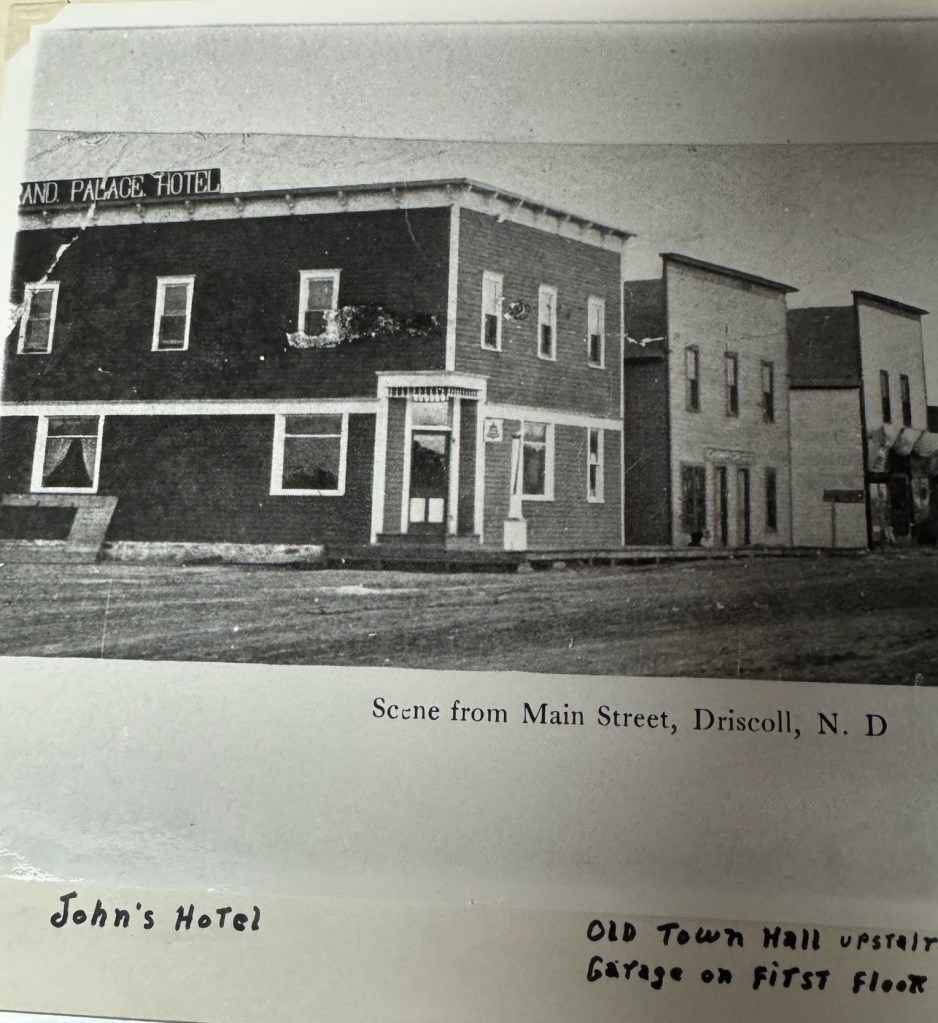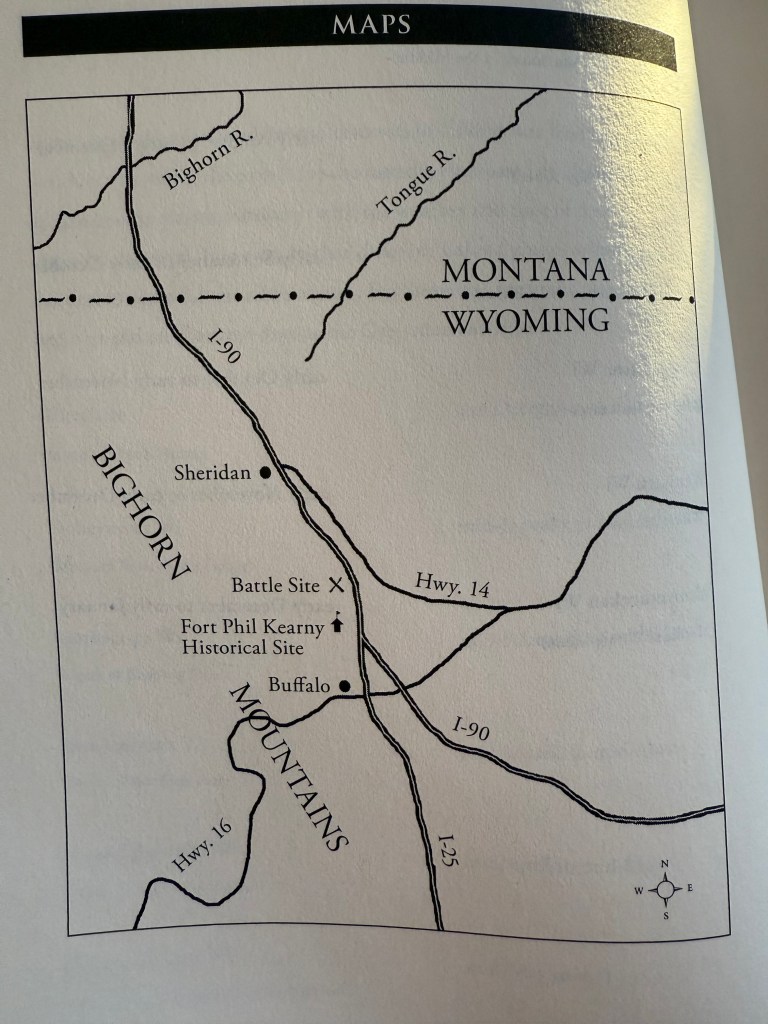For some weeks now I’ve been imagining setting down some thoughts on some (how would one do ALL) historiography of the Irish Potato Famine from the 1840s and on. It has been research in prep for America 250 (1776-2026) this year, at least as it pertains to our region that is the Northern Plains. We (a growing group of us) are thinking about the Battle of Little Bighorn/Greasy Grass (LBH/GG) at 150 (1876-2026), as word arrived to Bismarck, northern Dakota Territory, on July 5, 1876 (about 11:00PM, as some local memorial markers indicate), that Custer and his command fell to the combined tribes of Oceti Sakowin and Northern Cheyenne. Yes: for you non-LBG/GG-o-philes, Custer’s command fell on the first centennial of the nation, at 100 years (1776-1876), so the memory of this is, and will, forever be interconnected with any and all national semiquincentennial, sestercentennial, bicesquicentennial, tercentennial, and it’ll just go on and on.
Stay with me here. So not too long after Custer and his command fell at LBH/GG, this Patrick Byrne chap arrives to the area, as an orphan immigrant from County Roscommon, Ireland, to Bismarck. He’s in his teenage years, yet. Byrne gets through local highschool, and at some point works with John Burke, another Irish-Northern Plainser who ended up being pretty successful navigating the political ladder in North Dakota and with U.S. President Woodrow Wilson. By that point, Byrne was a personal secretary to Burke (if you attain a certain threshold of monetary wealth, the paperwork can get so abundant that it’s a good idea to bring aboard a personal secretary — so I am told.). And Byrne puts his head down and works. But Byrne also works on his own historical memory project, Soldiers of the Plains, and intentionally has it published in 1926, which would have been the 50th observance (1876-1926) of LBH/GG. It may have been the first time, at least in 1926, that an immigrant settler researched, wrote about, and had published a narrative for an Anglo-American-reading audience that was empathetic and sympathetic toward the Oceti and Northern Cheyenne at LBG/GG.
The brick-by-brick historical case that I’m working up here goes something like this: when Byrne learned and read and heard the oral histories of LBH/GG, he understood exactly what was happening as he would have lived through it and exited Ireland because of it: the Anglo-sphere attempting to remove the local population so the Anglo-sphere could bring it into their own agricultural production, whether on the Northern Plains or in Ireland. Byrne would look at what happened on the Northern Plains, evaluated it with his own Irish life history, and said something to the effect of, “Same wine, different bottle.” So that’s what has brought me to Irish potato famine historiography: gotta see what has been researched and written about to be informed by it and also interconnect it with the larger research communities.
I looked through three titles which include Tim Pat Coogan, The Famine Plot: England’s Role in Ireland’s Greatest Tragedy (New York, New York: Palgrave MacMillan, 2012), John Kelly, The Graves are Walking: The Great Famine and the Saga of the Irish People (New York, New York: Henry Holt & Company, 2012), and Padraic X. Scanlan, Rot: An Imperial History of the Irish Famine (New York City, New York: Basic Books, 2025). Because this happened around jultid, I also found myself revisiting Charles Dickens, A Christmas Carol, originally published in 1843, just a couple years before the initial onset of the first wave of the Irish potato famine.
Now how did the potato famine happen? Scanlan and Kelly do a really thorough job of covering this in their works. It is a result of the Columbian Exchange. I’ll be as brief as possible here: in the 1530s, when the potato arrived to Portugal from Peru, it wasn’t the infinite variety of potato seeds that arrived to Portugal. Or lemme restart: potatoes brought from central and meso America to western Europe didn’t include every variety. It was just one or a couple. Then when western Europeans grew potatoes, they essentially used a singular variety and copies upon copies of that singular variety: so as the potatoes proliferated, it was kind of like a bad xerox of a bad xerox copy with each grown potato (you’d just lop off one eye of the potato, and plant it, you wouldn’t seed potatoes from a multitude of different origin seeds). So when the fungus of P. infestans proliferated, it completely decimated the copies of the copies of the same potato copy throughout Ireland, a bit in Scandinavia, and western Europe. The same fungus is pretty common in central and meso-America, but the potato varieties have over time developed immunity or resistance to that fungus. And the fungus needs certain weather and temperature conditions to really proliferate. These temp and weather conditions are literally perfect during growing season in Ireland.
The responses to this famine from London policy makers was abysmal. Scanlan does a good job of setting the sociological zeitgeist of the times that help inform readers why policy decisions were so abysmal: at first, in the 19th century, as in the latter part of the 18th century, political economists started growing tired of Imperial mercantilism, or a lot of “protectionist” and protectionist policies that would, well, protect the Imperial economy. Those who grew tired of it advocated for freedom, or this idea that if “natural” economic forces could just be allowed to play out, everything would be fine. We hear this narrative packaged yet today. Or things would at least be better. But that’s not what happened. And it so far has never happened. Maybe some day, right? There’s also a fallacy of “purity” at play in the minds of policy makers, or these certain types of policy makers: there is no such thing as pure, natural economy. It’s a fallacy to begin with. There are always influences, some strong, some ancillary, so to think a pure economy could exist would mean one believes an economy can somehow operate in a vacuum that is and is not connected with the human condition.
See how difficult it can be to try to get a tidy 15-page paper prepped for a singular America 250 conference? But back to Byrne. Byrne’s mother died in childbirth. And his father passed away when Byrne was really young. I’d have to revisit what from, but I think the cause was listed as influenza or pneumonia. But throughout Roscommon County, Ireland, the potato famine memories would be prolific. As would the narratives. Anyhow, jumping forward to 1926, Byrne had his Soldiers of the Plains published, and it’s an important text to recall, today, because it demonstrates the infinite messiness of the past. And also how the memory of Custer was, and has always been, just as messy when Custer was alive as when he wasn’t. Perhaps messier.






